 |
||
|
HOME
|
US Navy -
ships
|
US Navy - air
units
|
USMC - air
units
|
International
Navies
|
Weapon Systems
|
Special Reports |
||
|
Royal Navy - Guided Missile Frigate F 233 HMS Marlborough |
||
|
||
| 11/22 | ||
|
Type,
class: Guided Missile Frigate; Type 23 / Duke class Builder: Swan Hunter Shipbuilding, Wallsend, U.K. STATUS: Laid down: October 22, 1987 Launched: January 21, 1989 Commissioned: June 14, 1991 Decommissioned: July 8, 2005 Fate: sold to Chile / renamed BACH Almirante Condell (FF 06) Homeport: - Namesake: Duke of Marlborough, Wiltshire, UK Ships Motto: S'EN VAT'EN GUERRE (he goes to war) Technical Data: see INFO > Duke / Type 23 class Guided Missile Frigate |
||
| images | ||
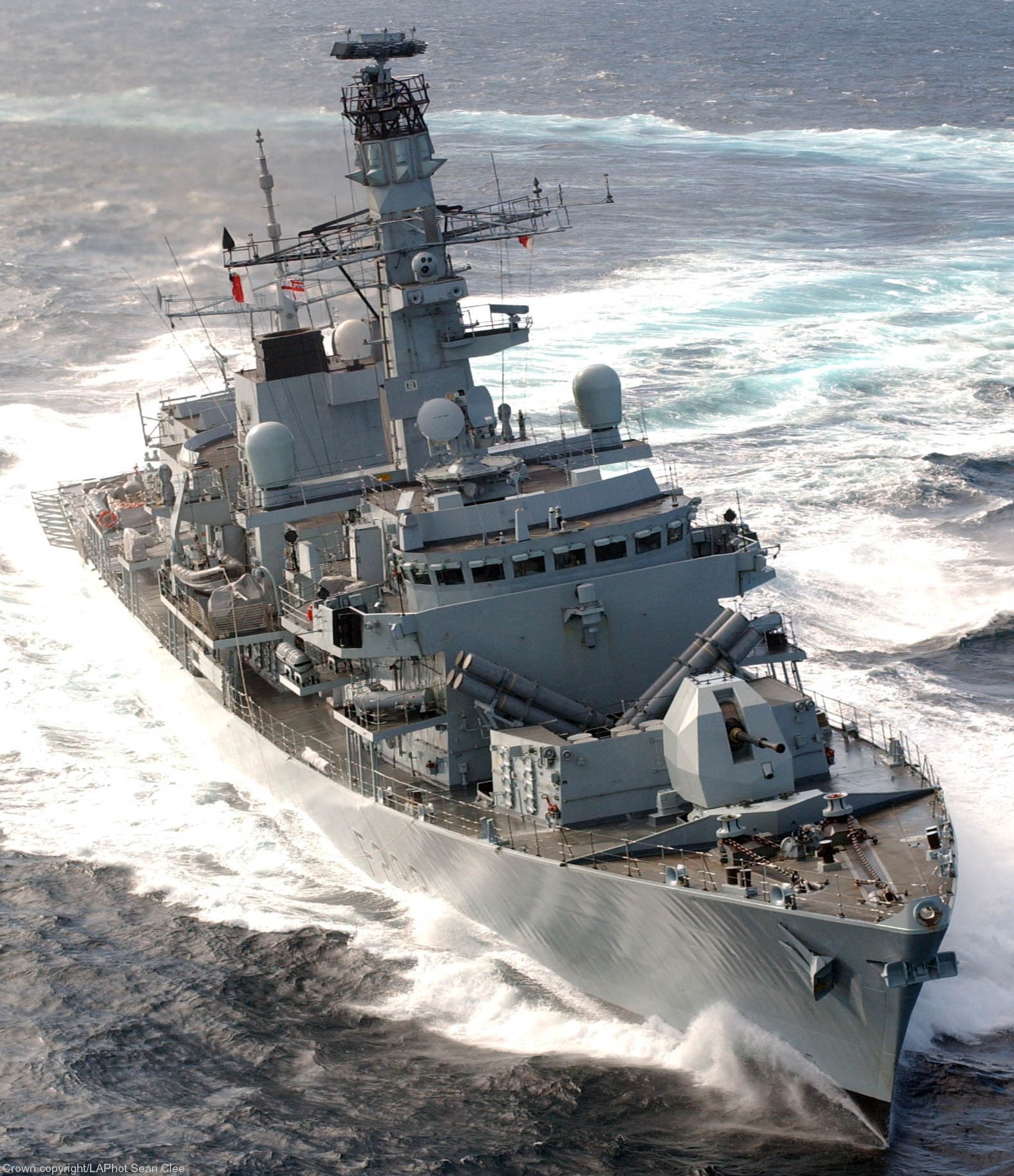 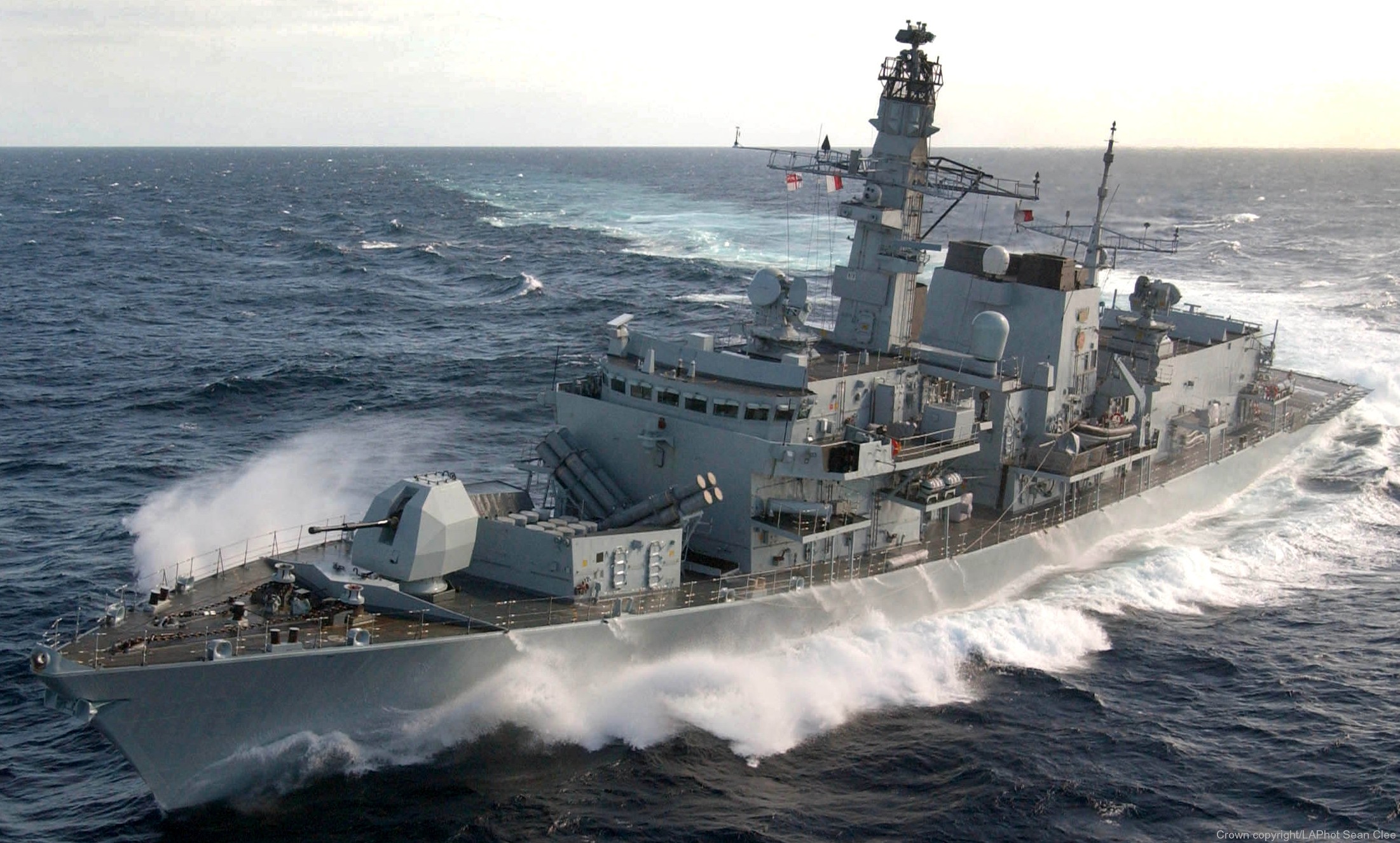 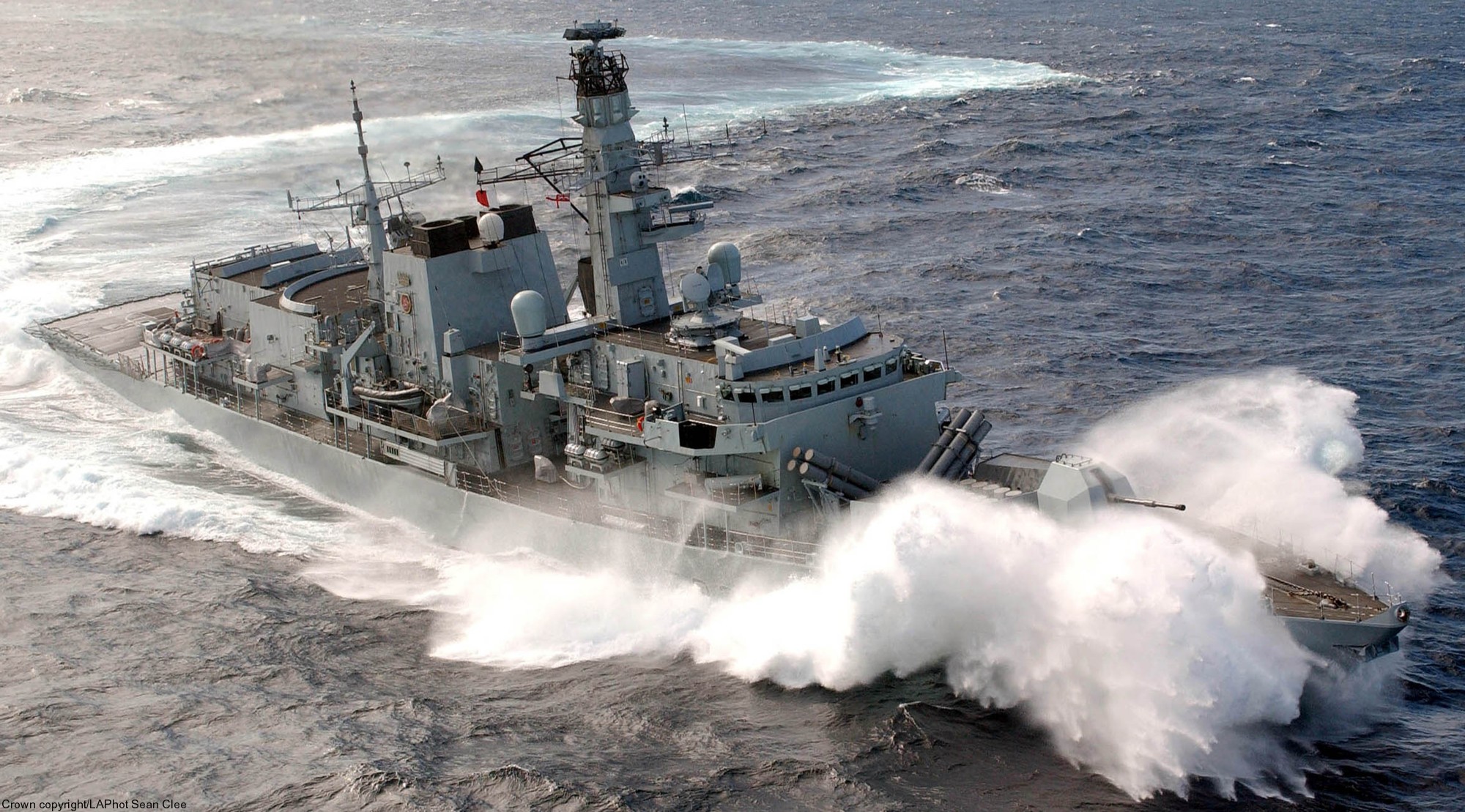 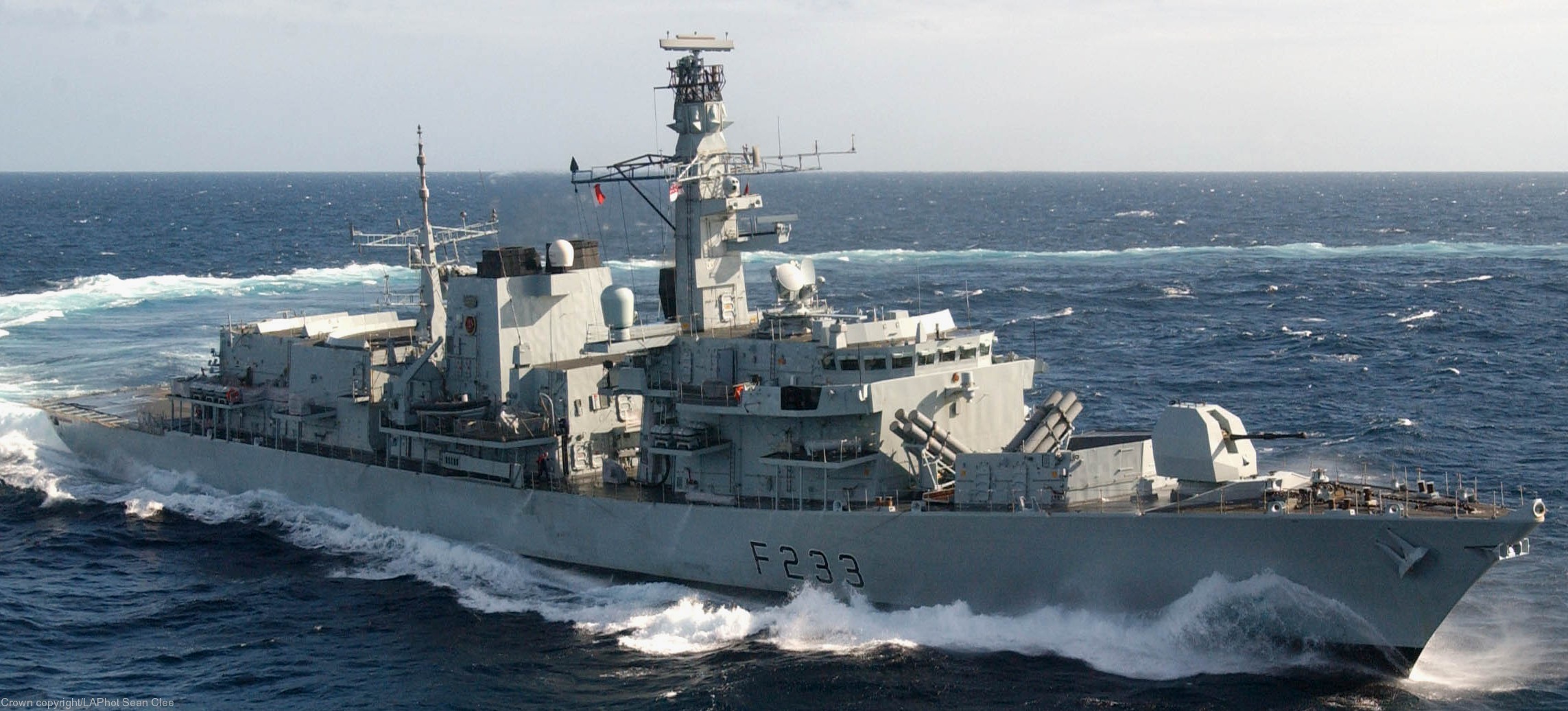 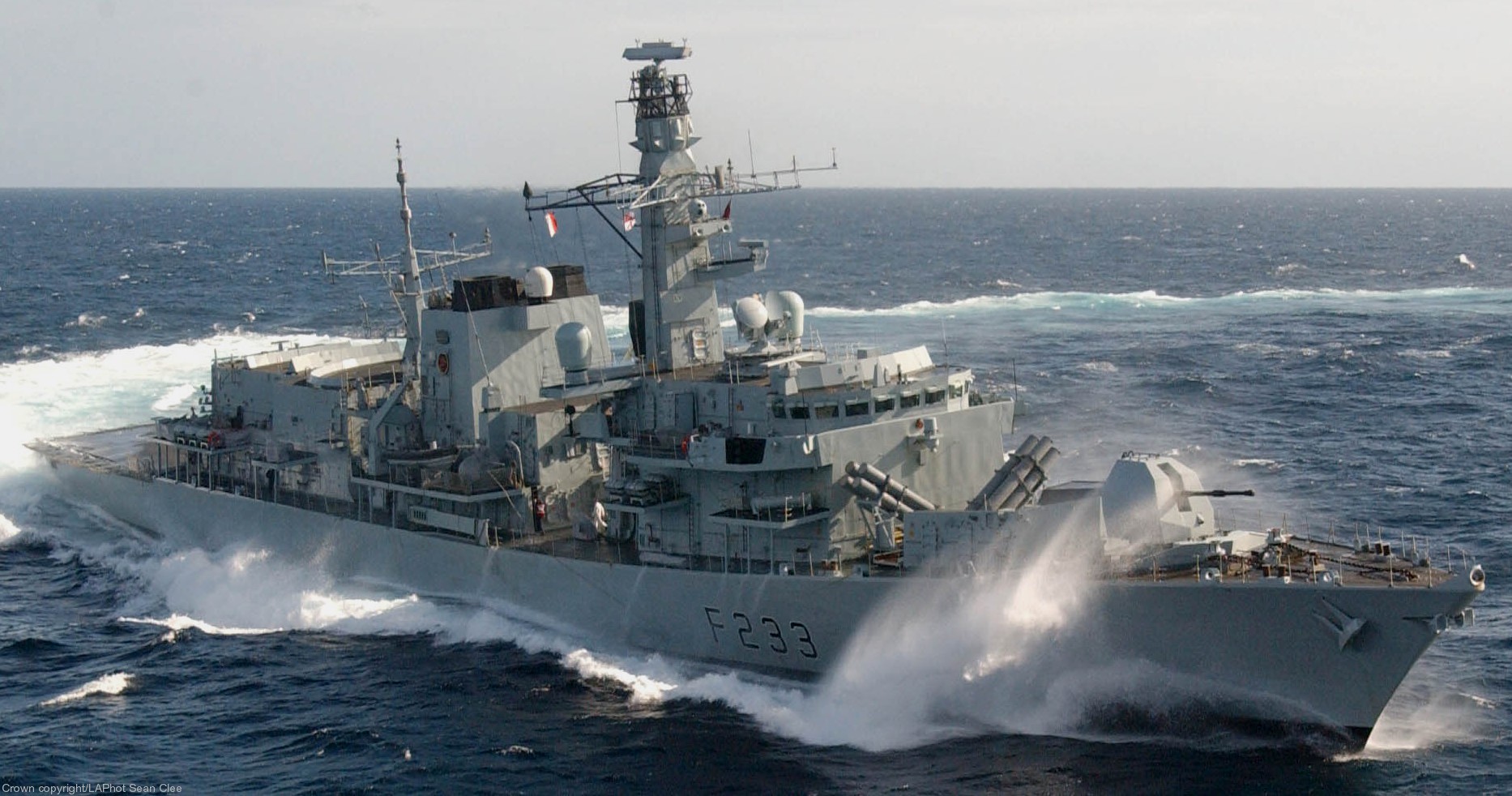 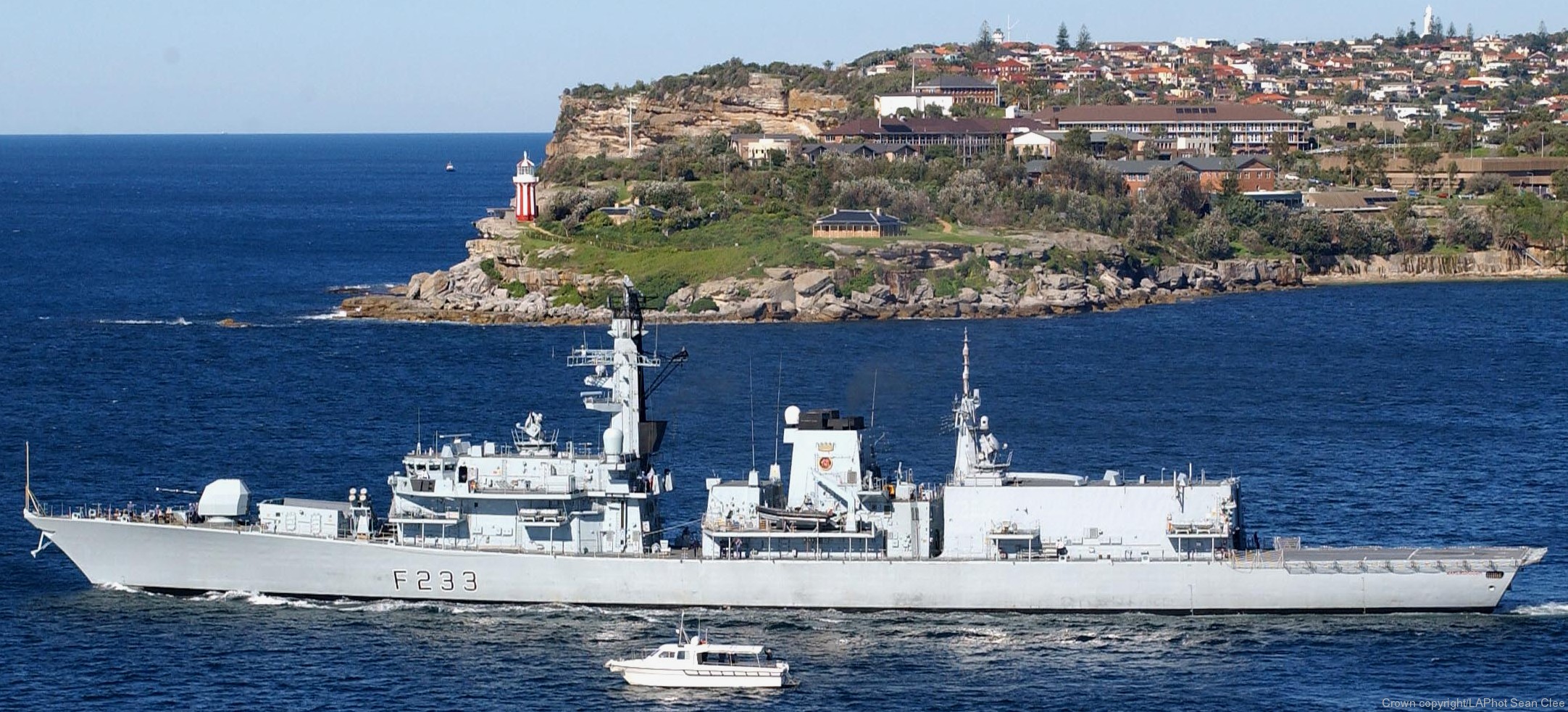 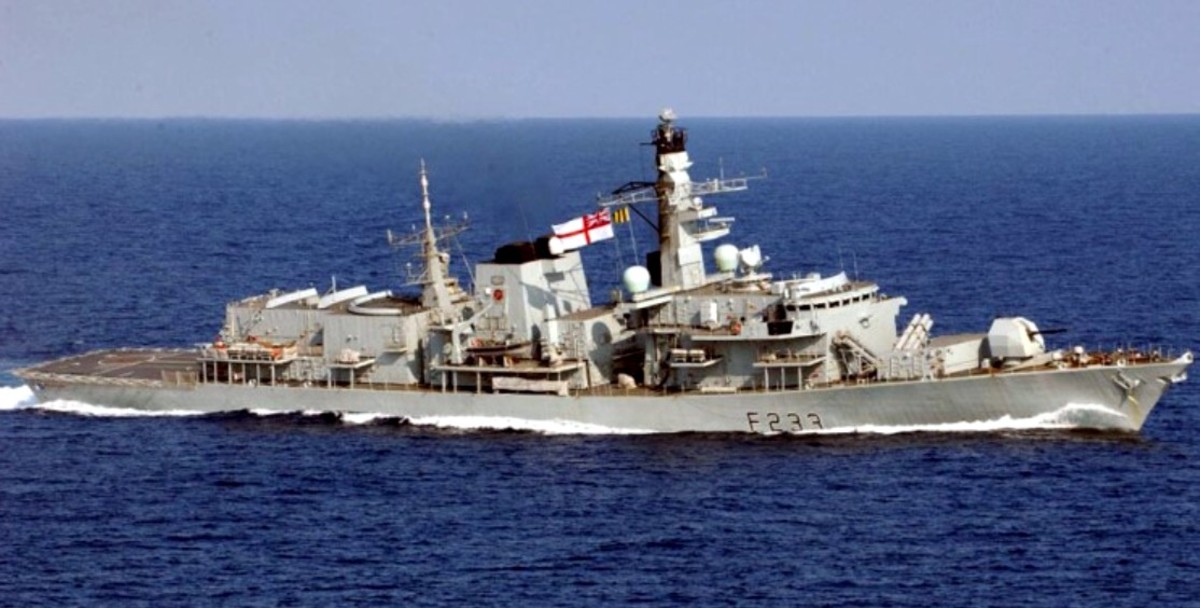 |
||
|
|
||
|
HMS Marlborough (F 233): HMS Marlborough was a 'Duke'-class Type 23 frigate of the Royal Navy, and the sixth ship to bear the name. She was named after John Churchill, 1st Duke of Marlborough. Royal Navy service: Marlborough was the third 'Duke' class Type 23 frigate to be commissioned, the first being Norfolk, F230 and the second Argyll, F231. She carried pennant number F233 rather than the sequential number of F232 which was considered unlucky, Form S.232 being the formal notification of a grounding or collision. The course 232 is also traditionally not given for the same reason, with a course heading of half degree either side of 232 being the alternative. Marlborough was the first naval ship on the scene to assist the stricken USS Cole after she was attacked in Aden, Yemen in October 2000. Marlborough, under the command of Captain Anthony Rix, was on passage to the UK after a six-month deployment in the Gulf and had a full medical detachment on board; when her offer of assistance was accepted she immediately diverted to Aden. Marlborough played a key role in the second Gulf War, under the command of Captain Mark Anderson. In July 2004, it was announced that Marlborough would be one of three Type 23 ships to be decommissioned by the end of 2006. In October 2004 Marlborough again came to the aid of a stricken ally when she was dispatched to assist HMCS Chicoutimi, adrift off the northwest Irish coast and arrived at the scene where RFA Wave Knight and Marlborough's sister-ship Montrose were present. Montrose had been the first ship to make contact with the boat. Other ships were also dispatched, including RFA Argus. Prior to her decommissioning, Marlborough had a US Navy officer permanently assigned to her crew. Reciprocally, a Royal Navy officer is permanently assigned to the destroyer USS Winston S. Churchill. Transfer to Chile: The 2003 defence cuts committed Marlborough to pay off by March 2006. In June 2005, it was announced that Marlborough would be sold to the Chilean Navy. The Chilean Navy officially welcomed their new Almirante Condell into the fleet at a Commissioning Ceremony on 28 May 2008. The vessel was the last of three former Royal Navy Type-23 frigates to be handed over to Chile, under a £134 million pound sales agreement arranged by the MOD’s Disposal Services Authority and signed in September 2005. She joins her sister ships in the Chilean Navy, the former HMS Norfolk and former HMS Grafton, handed over in November 2006 and March 2007 respectively. Along with other Chilean vessels of her class, Almirante Condell underwent a significant upgrade from September 2020 to October 2021. The CMS 330 combat management architecture was installed along TRS-4D G-Band active scanning radars and 32 CAMM Sea Ceptor vertical-launch surface-to-air missile silos to replace the previous Sea Wolf SAM system. source: wikipedia |
||
|
History of the Dukedom of Marlborough: Churchill had been made Lord Churchill of Eyemouth (1682) in the Scottish peerage, Baron Churchill of Sandridge (1685), and Earl of Marlborough (1689) in the Peerage of England. Shortly after her accession to the throne in 1702, Queen Anne made Churchill the first Duke of Marlborough and granted him the subsidiary title Marquess of Blandford. In 1678, Churchill married Sarah Jennings (1660–1744), a courtier and influential favourite of the queen. They had seven children, of whom four daughters married into some of the most important families in Great Britain; one daughter and one son died in infancy. He was pre-deceased by his son, John Churchill, Marquess of Blandford, in 1703; so, to prevent the extinction of the titles, a special Act of Parliament was passed. When the 1st Duke of Marlborough died in 1722 his title as Lord Churchill of Eyemouth in the Scottish peerage became extinct and the Marlborough titles passed, according to the Act, to his eldest daughter Henrietta (1681-1733), the 2nd Duchess of Marlborough. She was married to the 2nd Earl of Godolphin and had a son who predeceased her. When Henrietta died in 1733, the Marlborough titles passed to her nephew Charles Spencer (1706–1758), the third son of her late sister Anne (1683-1716), who had married the 3rd Earl of Sunderland in 1699. After his older brother's death in 1729, Charles Spencer had already inherited the Spencer family estates and the titles of Earl of Sunderland (1643) and Baron Spencer of Wormleighton (1603), all in the Peerage of England. Upon his maternal aunt Henrietta's death in 1733, Charles Spencer succeeded to the Marlborough family estates and titles and became the 3rd Duke. When he died in 1758, his titles passed to his eldest son George (1739–1817), who was succeeded by his eldest son George, the 5th Duke (1766–1840). In 1815, Francis Spencer (the younger son of the 4th Duke) was created Baron Churchill in the Peerage of the United Kingdom. In 1902, his grandson, the 3rd Baron Churchill, was created Viscount Churchill. In 1817, the 5th Duke obtained permission to assume and bear the surname of Churchill in addition to his surname of Spencer, to perpetuate the name of his illustrious great-great-grandfather. At the same time he received Royal Licence to quarter the coat of arms of Churchill with his paternal arms of Spencer. The modern Dukes thus originally bore the surname "Spencer": the double-barrelled surname of "Spencer-Churchill" as used since 1817 remains in the family, though some members have preferred to style themselves "Churchill". The 7th Duke was the paternal grandfather of the British Prime Minister Sir Winston Churchill, born at Blenheim Palace on 30 November 1874. The 11th duke, John Spencer-Churchill died in 2014, having assumed the title in 1972. The 12th and present duke is Charles James Spencer-Churchill. source: wikipedia |
||
| patches + more | ||
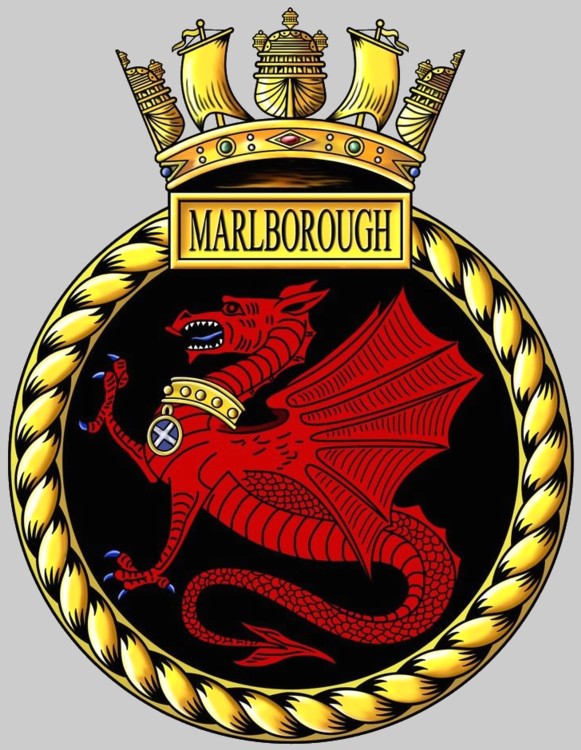 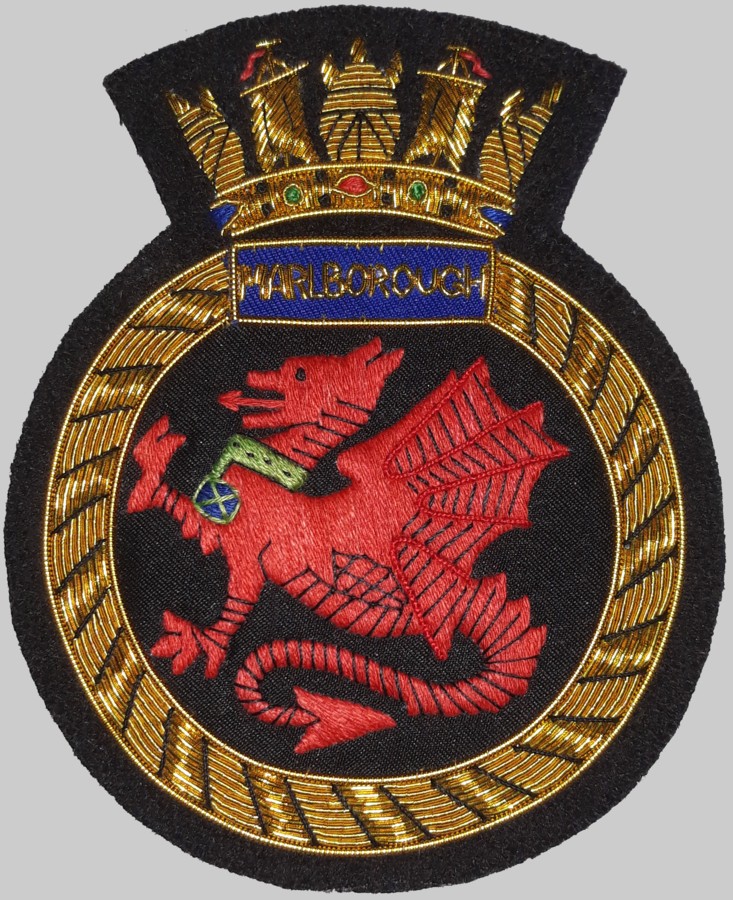 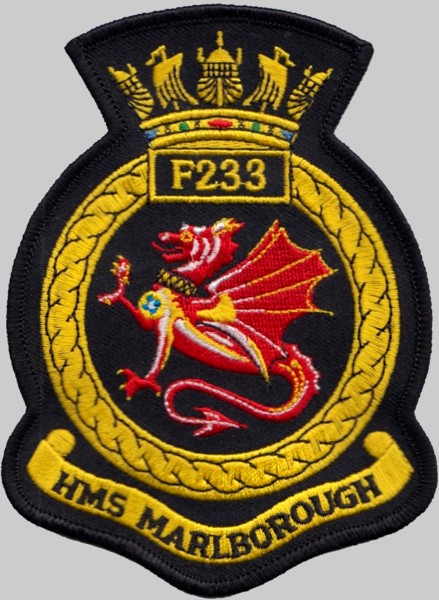 |
||
|
|
seaforces.org
|
Royal
Navy start page
| |